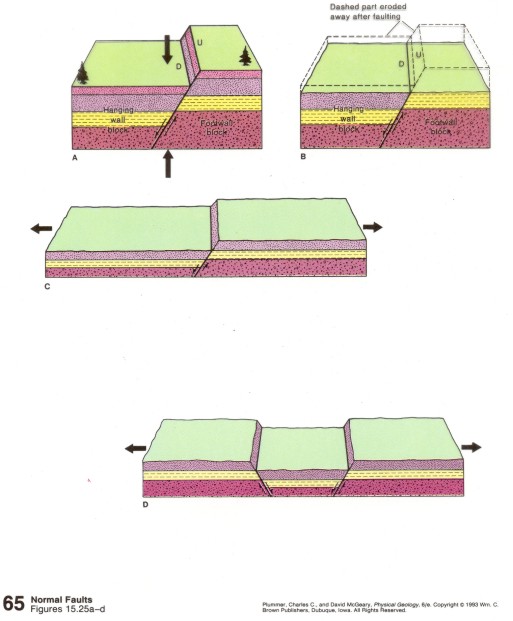KAWA MULTIMEDIA PUBLICATIONS
The characteristics of the Rift Valley.
- It has steep in-facing fault scarps.
- It varies in width from a few hundred metres to several kilometres.
- It has lakes which are salty.
- The sides of the rift Valley are rugged forming escarpments.
- The lakes in the rift valley are very deep long and narrow.

Theories of Rift Valley Formation
The two theories which help to explain the formation of the rift valley:
- Tensional theory and
- Compression theory
Tensional theory explains the rift valley formation as follows:-
- The tension theory suggests that the earth crust was made up of layers of hard sedimentary rocks lying in strata form.
- Due to tectonic movement, different layers of the earth crust were subjected to tension. So much so that a crack known as a fault develops in the strata.
- After one crack has developed in the earth’s crust then more tension develops in another fault developing almost parallel to the first one as seen in diagram
- Gradually two normal faultlines appear and the central block begins to sink. As the middle portion sinks the two opposite sides across the parallel faults are pushed up by the unequal forces.
- The central block sinks to form a rift valley while the sides remain up to form a host or block mountain

Compression theory:
- The compression theory suggests that the hard rocks were acted upon by compressional forces.
- Reverse fault lines develop and the out blocks begin to push or thrust over the central block.
- The two sides are moved upwards and they appear overhanging.
- The overhanging sides of the uplifted block worn and removed by erosion as seen in the diagram.
- The central block remains in one place and a rift valley is formed.

The diagram above showing the formation of a rift valley by (A) tension and (B) Compression
Geothermal activity
The formation of the Rift Valley continues, probably driven by mantle plumes and ultimately a result of the African superswell. The associated geothermal activity and spreading at the rift has caused the lithosphere to thin from a typical 100 km thickness for continents to a mere 20 km.

Though it is common for one arm of a triple junction to fail, if spreading continues the lithosphere may rupture several million years hence, splitting eastern Africa off to form a new landmass. In short, this will lead to the formation of a new mid-ocean ridge.
The volcanic activity at this site and unusual concentration of hotspots has produced the volcanic mountains:
- Mount Kilimanjaro,
- Mount Kenya,
- Mount Karisimbi,
- Mount Nyiragongo,
- Mount Meru and
- Mount Elgon as well as
- the Crater Highlands in Tanzania.
- The Ol Doinyo Lengai volcano remains active, and is currently the only natrocarbonatite volcano in the world.

The island Jabal al-Tair including the basaltic stratovolcano of the same name, is located northwest of the Bab al-Mandab passage at the mouth of the Red Sea, about half way between Yemen and Eritrea. This volcano erupted on 30 September 2007, after 124 years of dormancy.